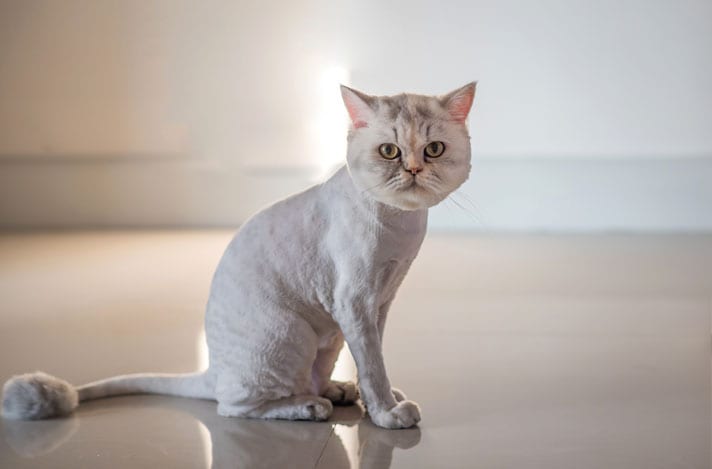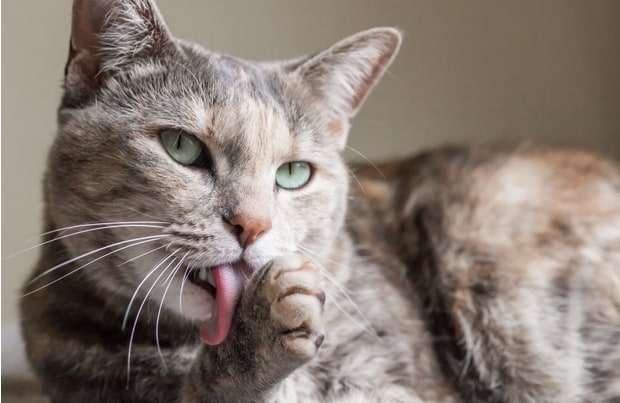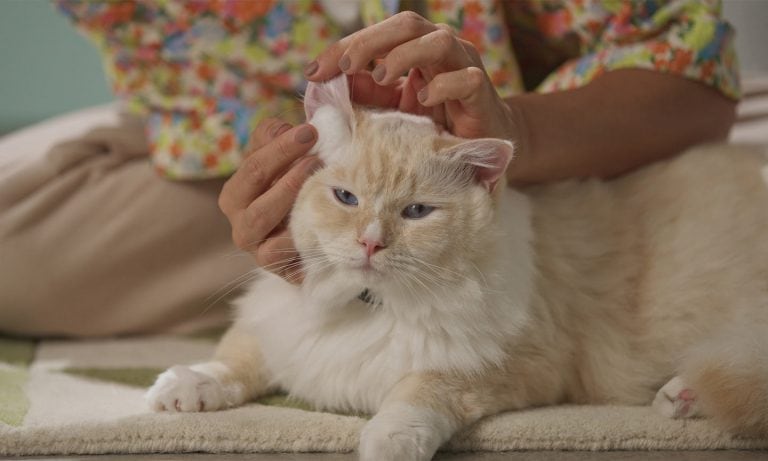When someone calls me to make an appointment to have their cat groomed, about 50 percent of the time they are requesting to have their pet clipped in what is known as a “lion cut.”
Arguably one of the most popular and familiar styles for pet cats, the lion cut consists of a very short trim from the shoulder blades down the back, sides, thighs and underbelly. Normally, the tail is clipped close as well, leaving a tuft on the end. The legs may be clipped about half way down, leaving the lower legs fuller and looking a bit like the cat is wearing fluffy boots. The fur on the neck, head and chest is left full, resembling a lion’s mane. Pet owners can request variations on this theme. For instance, some choose not to have the tail clipped, or to clip more of the neck and chest, reducing the amount of long mane that is left.
Many pet owners report that their cats seem happier and more playful after they have a lion cut, and this fact alone keeps them coming back for regular appointments. Think your cat could benefit from a lion cut? Read on for some pros and cons of this trending trim.
Lion Cut Pros
There are a number of pros associated with giving your cat a lion cut. Here are some reasons why it’s a good idea.
1. It removes matted fur.
If the cat’s coat has become very matted, having the fur closely clipped is usually the kindest and safest way to remove the tangles. Mats and tangles are uncomfortable for the cat, pulling on and potentially damaging its skin, so removing them is necessary.
2. It helps reduce hairballs.
Removing much of the length of the body coat dramatically reduces the amount of hair the cat can ingest when self-grooming. Hairballs can be more than a nuisance; they can cause life-threatening intestinal blockages, and some veterinarians recommend shortening the cat’s coat if the pet is prone to repetitive hairball issues.
3. It keeps even the worse self-groomers looking sharp.
Some cats do not do a good job maintaining their coats. Occasionally, I meet a cat who just seems to be missing the gene that programs cats to be fastidious about their fur. These unusual cats tend to look rather scruffy, and putting them in a lion cut helps them maintain a neat appearance between professional grooming appointments.
4. It’s low maintenance.
The lion trim is easy to maintain between professional grooming appointments. If your cat (or you!) dislikes the process of combing and brushing, the lion cut could be a nifty solution to your problem.
5. It’s easier for senior cats to groom.
As cats age, some begin to experience stiffness and lack of flexibility. This can prevent them from maintaining their fur as they once did. In this case, a short trim can keep them looking nice and tidy in their golden years.
6. It’ll mean less tumbleweeds around the house.
Although your cat will still shed, they will shed shorter hairs, so it will seem like there are fewer fuzzy tumbleweeds around your home.
7. It makes a statement.
A well-executed lion trim makes cats look quite stylish. If you are a pet owner with panache, this could be appealing to you.
Lion Cut Cons
A lion cut is not for every cat (or cat owner). Here are reasons why it might not be a good option.
1. Cats may be more susceptible to sunburn.
Clipping the hair very short exposes the cats skin to ultraviolet rays from the sun. Without its dense fur to protect it, cats may experience sunburn. This is particularly true for white or light-colored felines.
2. Cats may not be able to thermoregulate.
Very short hair can affect the way cats thermoregulate, causing them to become chilled or overheated once their coat is clipped. If your cat has a chronic illness or is elderly, you might ask your veterinarians advice before having a lion cut.
3. Less hair = less skin protection.
Your cat’s fur helps to protect its skin from being damaged in tussles with other cats, or being scraped by thorns and such if it goes outside.
4. Some cats simply do not like the new ‘do.
Occasionally a cat has a negative reaction to having their hair styled this way. If the cat hides for days, hisses when touched, changes its eating habits, or acts unhappy after having its coat clipped, I would recommend you avoid future lion cuts for that pet.
5. Some cats are deathly afraid of the hair clippers.
Some cats object strenuously to having buzzing, vibrating cat hair clippers on or even near their body. In this case, a lion cut is quickly ruled out.
Some people argue that if the cat’s coat is clipped closely, it may not grow back properly. I have clipped thousands of cats over the span of my career and have never experienced a case when the coat did not grow back to its full glory on a healthy pet. I recommend that the hair not be clipped using anything shorter than a #10 blade, and that the fur be clipped with the lay of the hair, not against.
It’s important to find a groomer who is familiar with handling cats if you decide to have your pet put into a lion cut. Cats require specialized handling techniques to keep them safe, healthy and happy when being groomed. To find a cat groomer near you, ask for a referral from your veterinarian, cat owning friends, or check out an organization such as The Professional Cat Groomers Association of America. Their website lists affiliated groomers by state.
Daryl Conner is an award winning photojournalist and Master Pet Stylist who has loved making dogs and cats more beautiful for 30 years. You can find her plying her trade at FairWinds Grooming Studio. She shares her meadow hugged Maine farmhouse with her very patient husband and a lot of animals.
Share:









